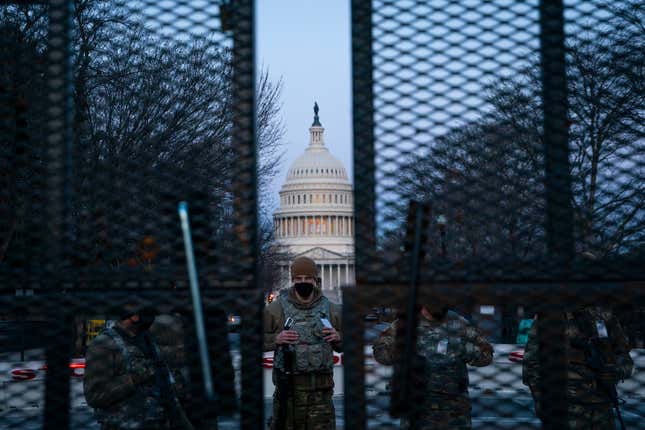Capitol Police Will Finally Start Taking Down That Hideous Fence
Politics

More than two months after the Jan. 6 insurrection on the Capitol, authorities are finally preparing to scale back the hideous razor-wire fence that has surrounded the grounds since.
I’m being a bit flip, but it is an aesthetic issue to some extent: The New York Times notes that its removal will be “a visible milestone” that things in the seat of our government are returning to “normal.” (Normalcy being what we all crave these days, apparently, if only the appearance of it.) And though the fencing serves as a kind of show of force and impenetrability, its very existence reminds us that the Capitol was at one point quite easily breached.
-

-

-

-

-

-

-

-

-

-

-

-

-

-

-

-

-

-

-

-

-

-

-

-

-

-

-

-

-

-

-

-

-

-

-

-

-

-

-

-








































